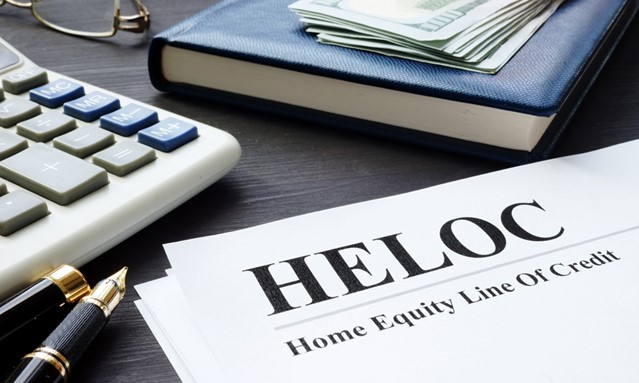So, you’ve been in your home for a few years, and your project wish list is growing. Maybe you want to finally do something about the crumbling driveway, build a deck or update the kitchen. But these projects run into the tens of thousands of dollars, and most people don’t have that kind of cash laying around. A home equity loan or a HELOC can help you reach your goals. Read on to learn what they are, and if they're worth using.
Home equity loan vs. HELOC: What’s the difference?
Your home is an asset. As you make principal payments and the home increases in value, you gain equity. That’s a major part of people’s wealth-building strategy. But until you sell that property, that wealth is locked away, out of reach. One thing you can do is borrow against your home’s equity to fund your home improvement projects. That’s where home equity loans and home equity lines of credit come in. Read the following to learn how they work and how they differ.
What’s a home equity loan?
Basically, a home equity loan lets you borrow money against equity you’ve built in your home. Some refer to home equity loans as a second mortgage. So if you’ve been making regular monthly mortgage payments for the past 5, 10, or more years, you should have equity to help you cover many types of home improvement projects.
- You’ll need to meet basic requirements of the lender. Most lenders are looking for a minimum of 15% equity, plus you’ll need a good track record of repayment on your credit report.
- The lender would use your house as collateral for the loan.
- You would receive a lump sum to pay for the project.
- A home equity loan gives you a fixed interest rate that doesn’t change in the life of the loan.
What’s a home equity line of credit? (HELOC)
A home equity line of credit (HELOC) works much like a home equity loan, in that you’re borrowing money against the equity of your property. But there are a couple of key differences.
- A HELOC works like a revolving line of credit. You can borrow as much or as little as you like against the HELOC, whenever you need the money.
- Once you pay off your project, the line of credit is there for you in the future. No need to reapply for a new loan.
- Unlike an equity loan, interest rates are variable. Your monthly payment will change. (But as with a credit card, you only pay interest on what you borrow.)
Facts about home equity and HELOC loans
- The interest you pay on your home equity and HELOC could lower your taxes, as long as you spent the money on your house. Keep in mind, it would likely have to exceed the standard deduction on your federal tax form before you see a benefit. (Consult your accountant to confirm any possible benefits.)
- You’re not limited to the principal you’ve paid off. Home equity lets you borrow against the total value of your home. So if your current mortgage is $175,000 and the value of your home is $275,000, you can borrow up to $100,000. (To learn more, talk to your lender.)
- To access your equity, you can apply to a different bank than your current mortgage lender. This gives you the freedom to shop for the best repayment terms.
Before you apply, read Hard pull versus soft credit inquiry: What are they and why do they matter?
What to consider before taking an equity loan
Your home is collateral for the loan. That means if you fall behind on these payments, the lender can foreclose on your house. Before you add debt, do some honest accounting to make sure the additional monthly payment won’t strain your budget. It’s important to make a plan.
Crunch the numbers to find what you can afford with Minnwest’s financial calculator, How much will my loan payments be?
Are home equity loans worth it?
If you’re planning to grow old and gray in your home, then your home project will be all about making your digs more functional and enjoyable for you and your family.
However, for those planning to move in the next three years, remodeling can be a good investment that makes your property more attractive to buyers. With the right updates, you can increase your home value and add to the list of selling points. (After all, that forest green tiling in your circa 1995 bathroom is looking a bit dated!)
Making home improvements before selling is a financial balancing act. You'll want to steer clear of overextending the equity you’ve already earned through principal payments and appreciation in value you’ve gained.
Get an estimate of the ROI of your chosen project, so you can determine if the project adds value to your home. A good starting place is the annual Cost vs. Value Report produced by Remodeling.com, which analyzes the costs and returns on a number of home improvement projects.
Here are a few highlights from the Cost vs. Value Report from 2020 for Minnesota and surrounding states:
- Minor kitchen remodel: $23,016 — 73.9% of costs recouped
- Manufactured stone veneer: $9,333 — 60.7% costs recouped
- Window replacement: $17,240 — 53.4% of costs recouped
- Bath remodel: $33,326 — 53.3% of costs recouped
The decision to remodel and update comes down to your house’s condition and what the local market wants. For example, if young couples with families are buying in your area, you can attract these buyers by finishing the attic to add a fourth bedroom.
Ready for your home to take flight?
Looking for options to finance your home project? Your best bet is talking to a lender at your local community bank. At Minnwest Bank, we pride ourselves on personalized service and sharing our expertise, so you can feel confident in these major financial decisions. We have the flexibility to set up repayment terms that meet your needs.
Get started on your home equity loan or HELOC at Minnwest Bank and connect with our helpful lenders today.


